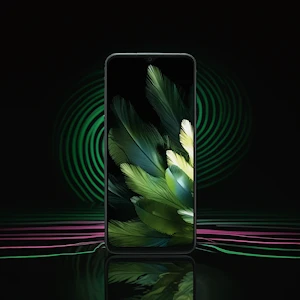The Blackview Wave 8: A Budget Phone That Plays It Safe (But Maybe Too Safe)
Let’s get this out of the way: The Blackview Wave 8 isn’t going to blow your mind. But for €73? It doesn’t have to. This phone is like that reliable hatchback you buy for your teenager – no frills, but it’ll get them from point A to B without breaking the bank. Let me walk you through what that actually means.
The Screen: Bigger Isn’t Always Better
That 6.56-inch display sounds impressive until you realize it’s stretching a 720p resolution across it. Imagine printing a poster-sized photo at low resolution – you’ll see the pixels if you squint. Streaming Netflix? It’s fine for casual watching, but text looks fuzzy, and colors feel washed out (thanks to that 70% NTSC color gamut). Brightness peaks at 400 nits, which means you’ll be hunting for shade outdoors. The "2D curved glass" is marketing fluff – it’s just flat plastic with rounded edges.
Performance: Like Running in Sand
The Unisoc T606 chipset here is the same processor you’d find in budget phones from 2021. Those two Cortex-75 cores? They’re basically interns trying to manage a corporate workload. Swiping between apps feels okay… until you open three Chrome tabs. That 211,000 AnTuTu score? My five-year-old Pixel 4a scores higher. Basic games like Candy Crush chug along, but Genshin Impact? Forget it. The Mali-G57 GPU whimpers at anything beyond casual puzzles.
And that 4GB RAM? Android 14 eats half of it before you even open an app. You’ll feel the lag when switching between WhatsApp and Google Maps – like waiting for a dial-up modem to connect. Storage is eMMC 5.1 (translation: slower than a USB 2.0 flash drive), but hey, at least there’s a microSD slot for your cat videos.
Battery Life: The One Shining Star
Here’s where the Wave 8 earns its keep. That 5,000mAh battery is a tank. I’d get two full days of light use – texting, occasional YouTube, doomscrolling Instagram. Even heavy users should hit bedtime with 20% left. But charging? It’s stuck in 2015 with 10W speeds. Zero to 100% takes nearly three hours. Perfect if you’re the type who charges overnight, but brutal if you’re rushing out the door.
Cameras: Just Don’t Zoom In
The 8MP rear camera takes photos that scream "budget phone." Daylight shots are passable if you’re posting to Facebook, but shadows turn into muddy blobs, and skies look like overexposed wallpaper. Low-light? Let’s just say you’ll miss details faster than a toddler loses socks. The 8MP selfie cam has a GalaxyCore sensor – which sounds fancy until you realize it’s the same hardware you’d find in a €50 burner phone. No night mode, no stabilization, no 4K video. It’s strictly for "proof of life" selfies.
Design & Durability: Plastic Fantastic
The all-plastic body feels exactly like what it is: cheap. But there’s a silver lining – it’s lightweight (193g) and has IP52 splash resistance. Survive a spilled coffee? Probably. Survive being sat on? Maybe. The lack of NFC means no Google Pay, which stings in 2024. But hey, at least you get a headphone jack (RIP, dongles).
Who’s This For?
Buy it if: You want a backup phone for hiking trips, need something for Grandma’s calls and texts, or are on a "ramen noodle budget." The battery life and Android 14 (for now) are its best features.
Avoid it if: You care about smooth performance, take photos beyond daylight snapshots, or want something that feels premium. For €20-30 more, phones like the Redmi Note 13 or Realme C55 offer better screens, faster chips, and actual multitasking.
My Take: Would I Use This Daily?
As someone who juggle 15 Chrome tabs and needs reliable cameras? Nope. The sluggish performance would drive me nuts. But if I were buying for my niece’s first phone or needed a rugged backup for festivals? Absolutely. It’s the tech equivalent of a rice cooker – not exciting, but it does one thing (battery life) exceptionally well.
The Blackview Wave 8 is a reminder that "cheap" doesn’t mean "bad," but it does mean compromise. Just know exactly what you’re sacrificing.
